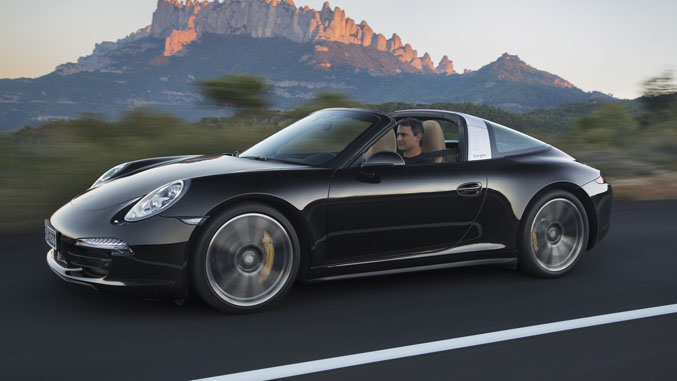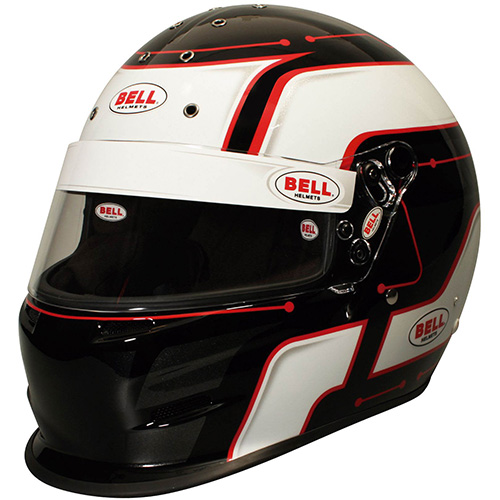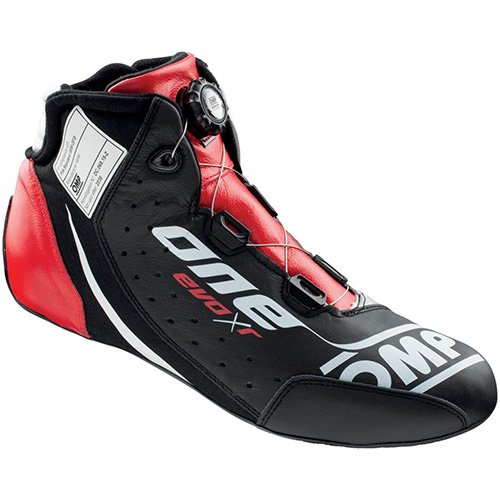Riding the line between a hardtop and a convertible, Porsche’s newest iteration of the 911 Targa made its debut today at the Detroit Auto Show. Maintaining the traditional 911 silhouette while still providing the wind-in-the-air thrills of an open top roadster, the newest Targa comes packing a few tricks up its sleeve.
Unlike the previous Targa, which offered a push-button sliding roof, the new Targa ditches the sliding operation in favor of clamshell-like affair which can be seen in the video below. The process takes 19 seconds from start to finish, but can only be done with the vehicle is stationary.
At launch, the buyers will be offered Targa availability in the form of two model options: the 911 Targa 4 and 911 Targa 4S. That "4" designates that both these 911s will be all-wheel-drive, and as such, the Targa models will feature the wider track found in the rest of the 4 line, which is in place to accommodate the larger drivetrain of the AWD system.
The 911 Targa 4 will be propelled by the same 350 horsepower, 3.4-liter six-cylinder motor as its hardtop brethren, and the Targa 4S will in turn receive the 400 horsepower, 3.8-liter motor found in the traditional 911 Carrera S models, good for 0-60 times of 4.6 and 4.2 seconds, respectively, and top speeds of 175 mph in the 4 and 183 in the 4S. Porsche also notes that the Targa has also been treated to model-specific chassis tuning to ensure the 911’s transformation into a semi-convertible doesn’t negatively effect its legendary handling prowess.
Expected to hit showrooms this summer, the Targa 4 starts at $101,600 while the Targa 4S will set you back $116,200 – excluding destination. Check out the video below to see the Targa in motion, and the press release below for additional details.
The new Porsche 911 Targa
Featuring the innovative Targa roof: The world premiere of a modern classic
Stuttgart. World premiere of the 911 Targa: At the North American International Auto Show (NAIAS) in Detroit, Porsche is presenting the latest generation of the extravagant 911 model to the public. This model is the first to combine the classic Targa concept with state-of-the-art roof technology. Just like the legendary original Targa model, the new model features the characteristic wide bar in place of the B-pillars, a movable roof section above the front seats and a wraparound rear window with no C-pillar. But unlike the classic models, the roof segment on the new Targa can be opened and closed at the push of a button. When the button is actuated, the fully automatic roof system stows the convertible top behind the rear seat system, providing a real spectacle. The rear-weighted design of the PTM all-wheel drive fitted as standard is a typical Porsche feature, and guarantees that this latest 911 model also offers optimum driving dynamics on all road surfaces and in all weather conditions.
With these features, the new 911 Targa is presenting itself as a high-quality, innovative remake of the classic vehicle from 1965. The model shares a great deal in common with the 911 Carrera 4 cabriolet models; up to the window line, the technology and body of the vehicles is more or less the same. The combination of the wide rear end that is typical of all-wheel drive models, the Targa bar and the dome-shaped rear window gives the latest 911 an extremely sporty appearance and a low-slung profile.
Two model variants, exclusively with all-wheel drive
As with the predecessor model, the new Targa generation comes in two versions available exclusively with all-wheel drive. The 911 Targa 4 is powered by a 3.4-litre, 350 hp (257 kW) flat engine. Equipped with the Porsche Doppelkupplung (PDK) and Sport Chrono package, this model accelerates from zero to 100 km/h in just 4.8 seconds and boasts a top speed of 282 km/h. Its NEDC fuel consumption figures are between 9.5 and 8.7 litres/100 km, depending on transmission, which corresponds to a CO2 emissions level of between 223 and 204 g/km. The top model is the 911 Targa 4S, which delivers 400 hp (294 kW) from a displacement of 3.8 litres. This model reaches a top speed of 296 km/h and, with the PDK and Sport Chrono package fitted, accelerates in 4.4 seconds. Its fuel consumption fluctuates between 10.0 and 9.2 litres per 100 km, depending on transmission, which corresponds to a CO2 level of between 237 and 214 g/km. With these figures, the model is on a par with the high standard set by the 911 Carrera 4 cabriolet models in terms of engine and road performance, as well as efficiency. Both sportscars are certified for compliance with the Euro 6 emissions standard.
The new 911 Targa models will be launched onto the market in May 2014. In Germany, the 911 Targa costs EUR 109,338 and the 911 Targa S EUR 124,094, inclusive of VAT and country-specific equipment in each case.



















